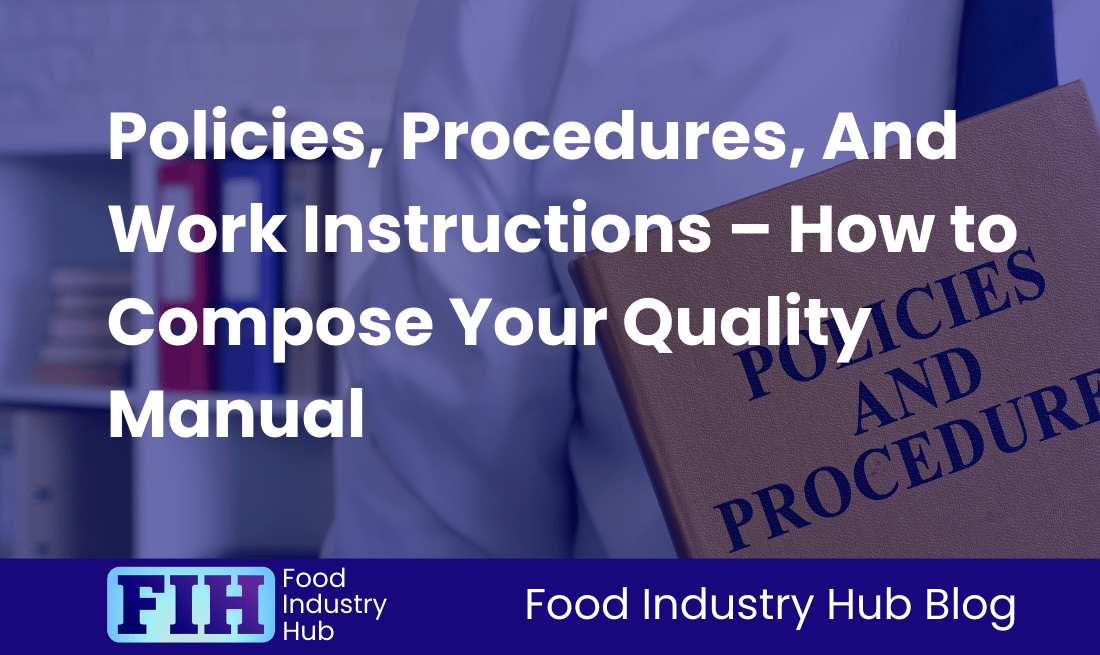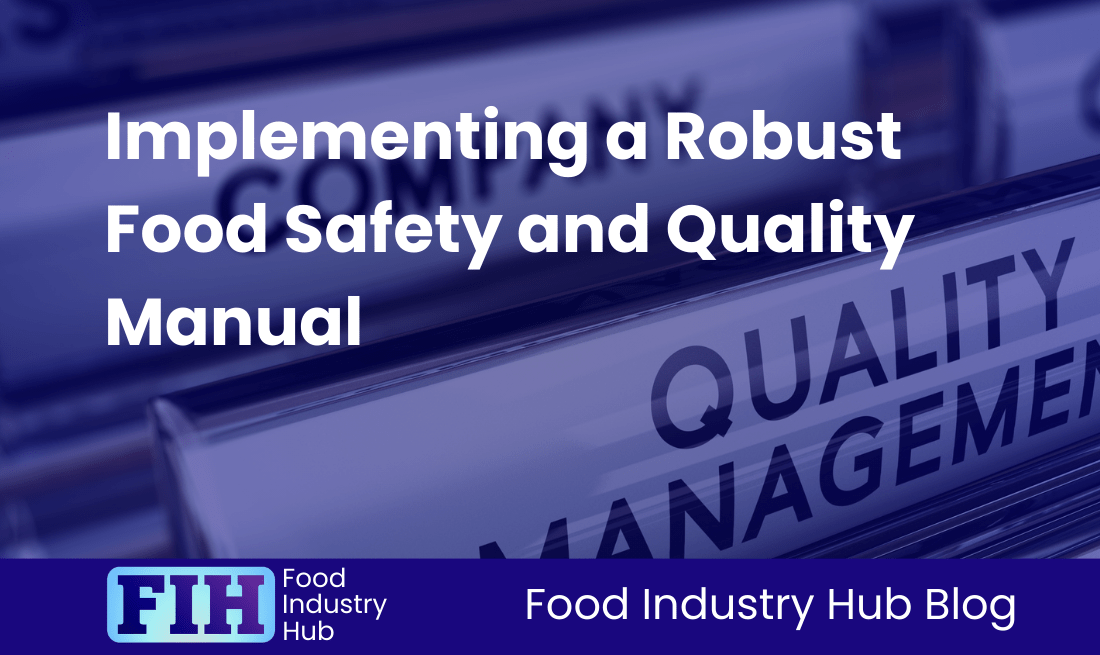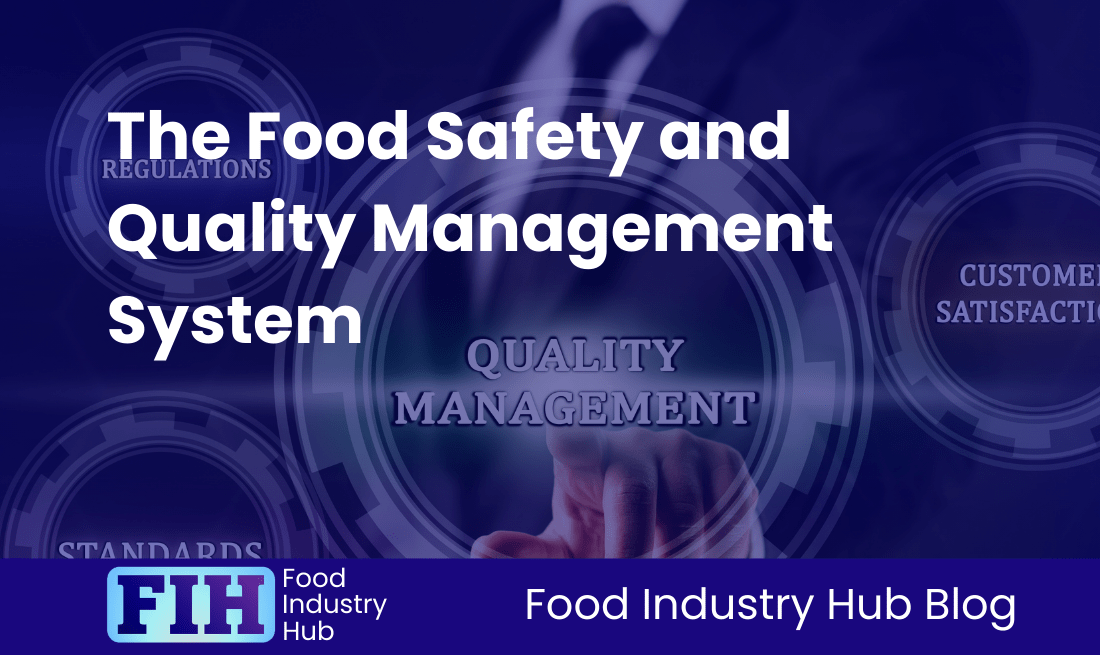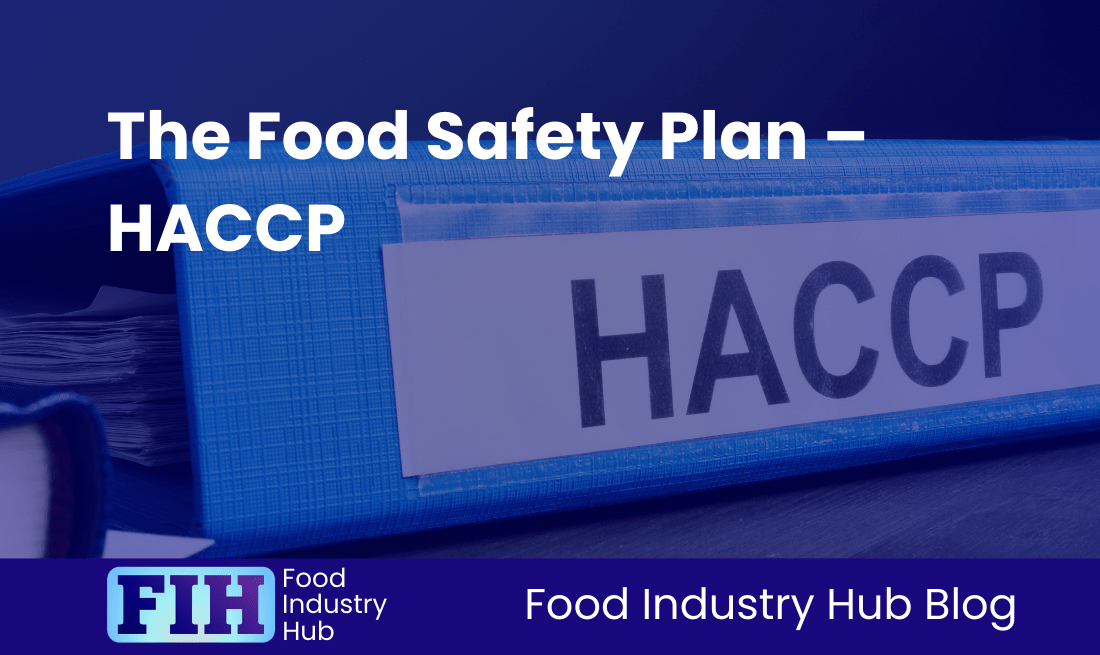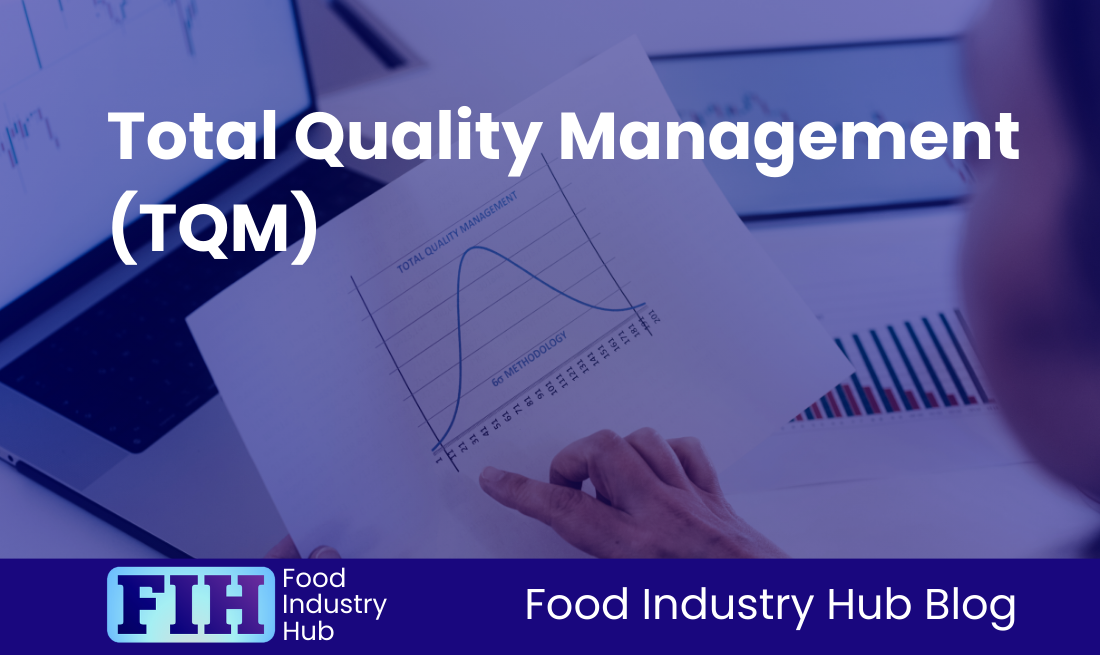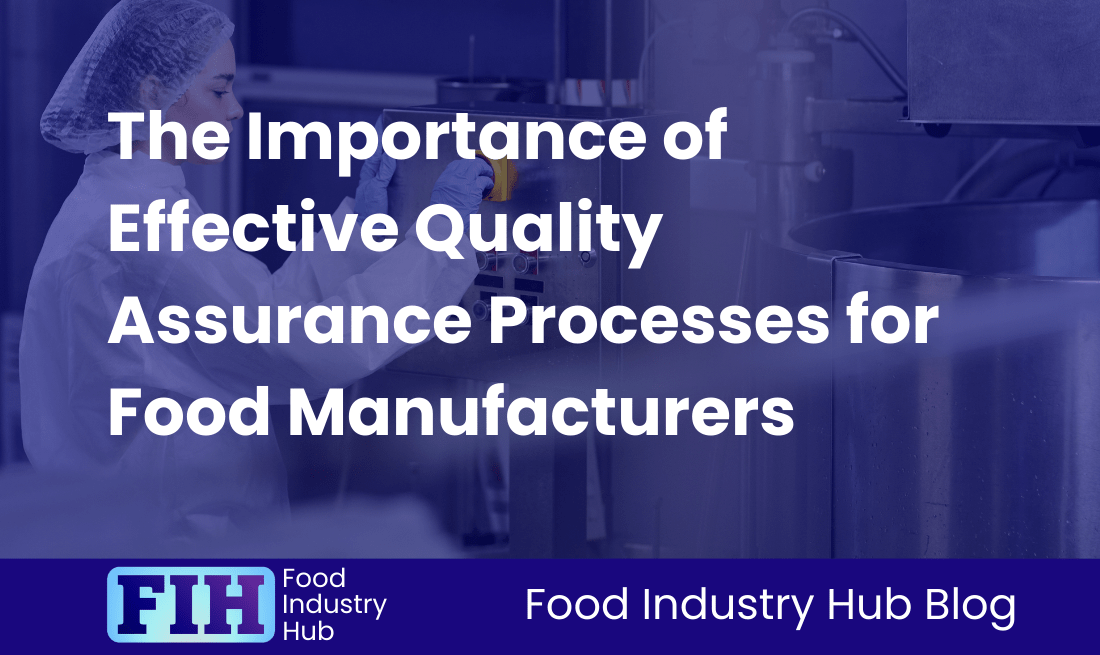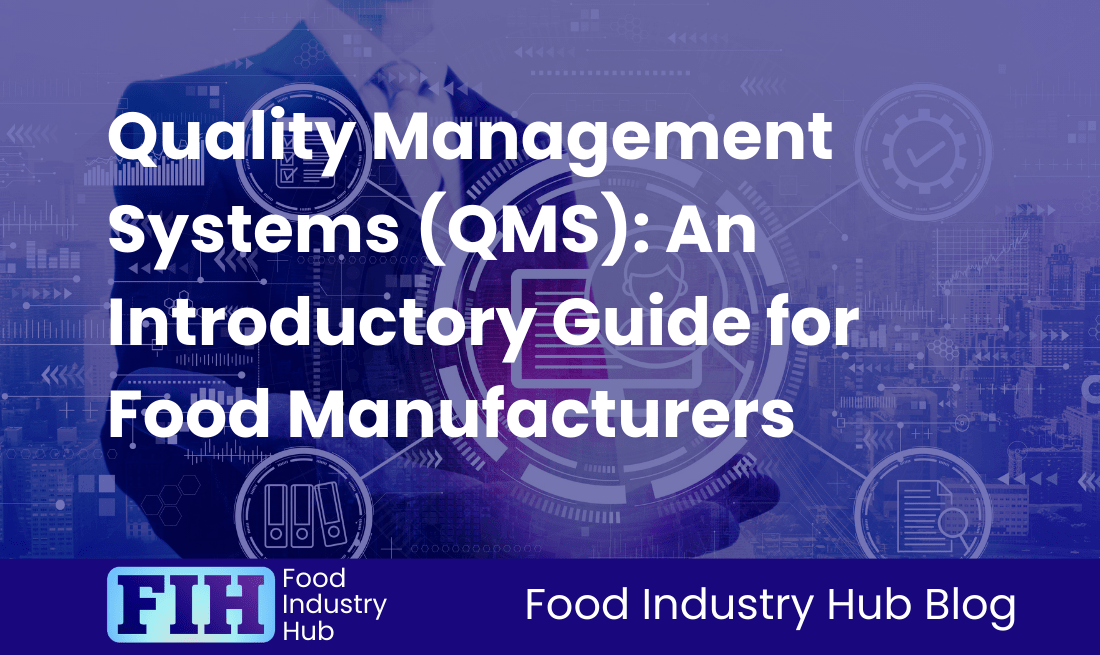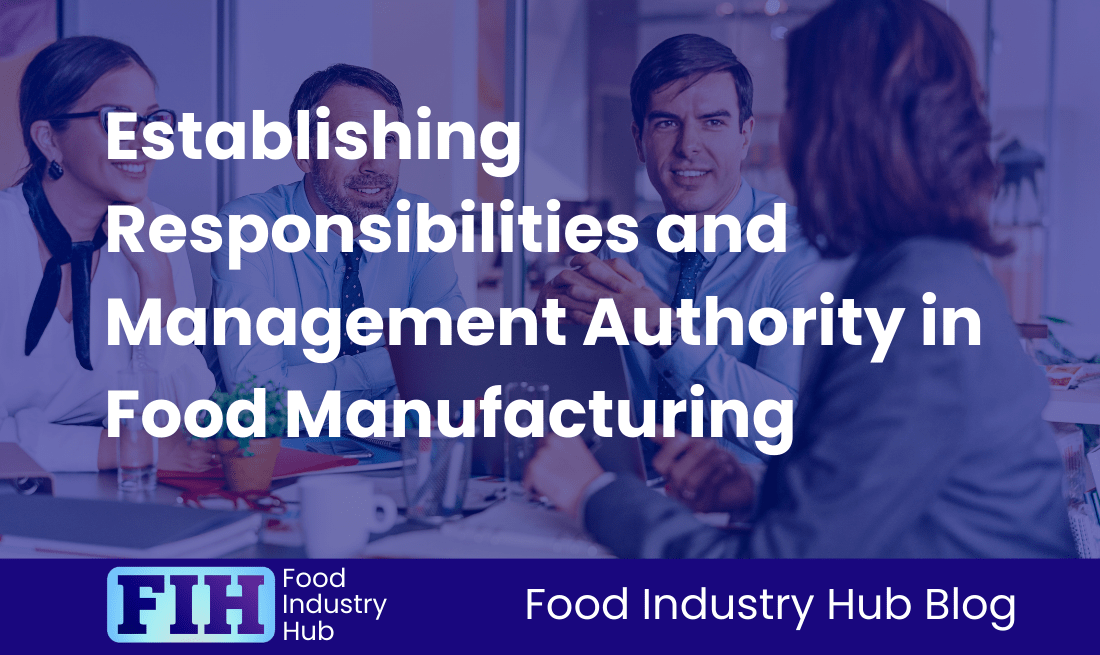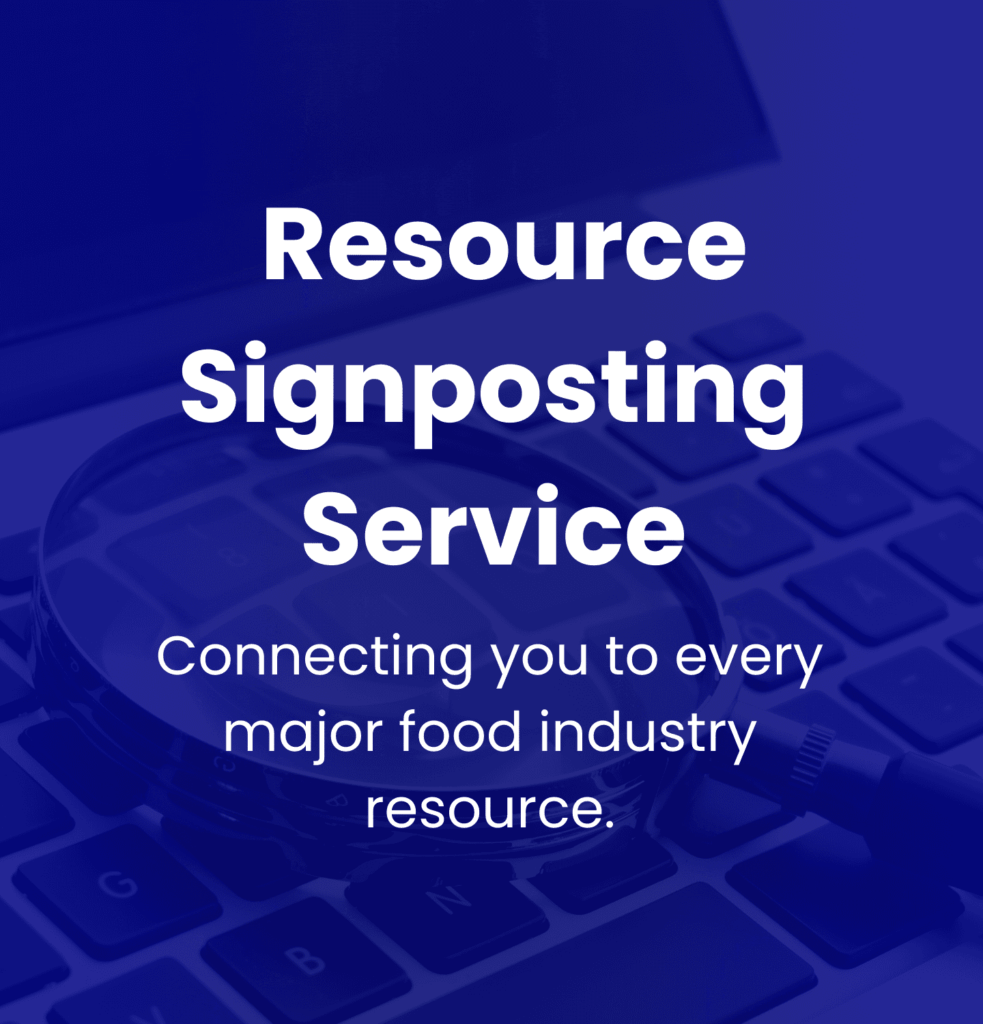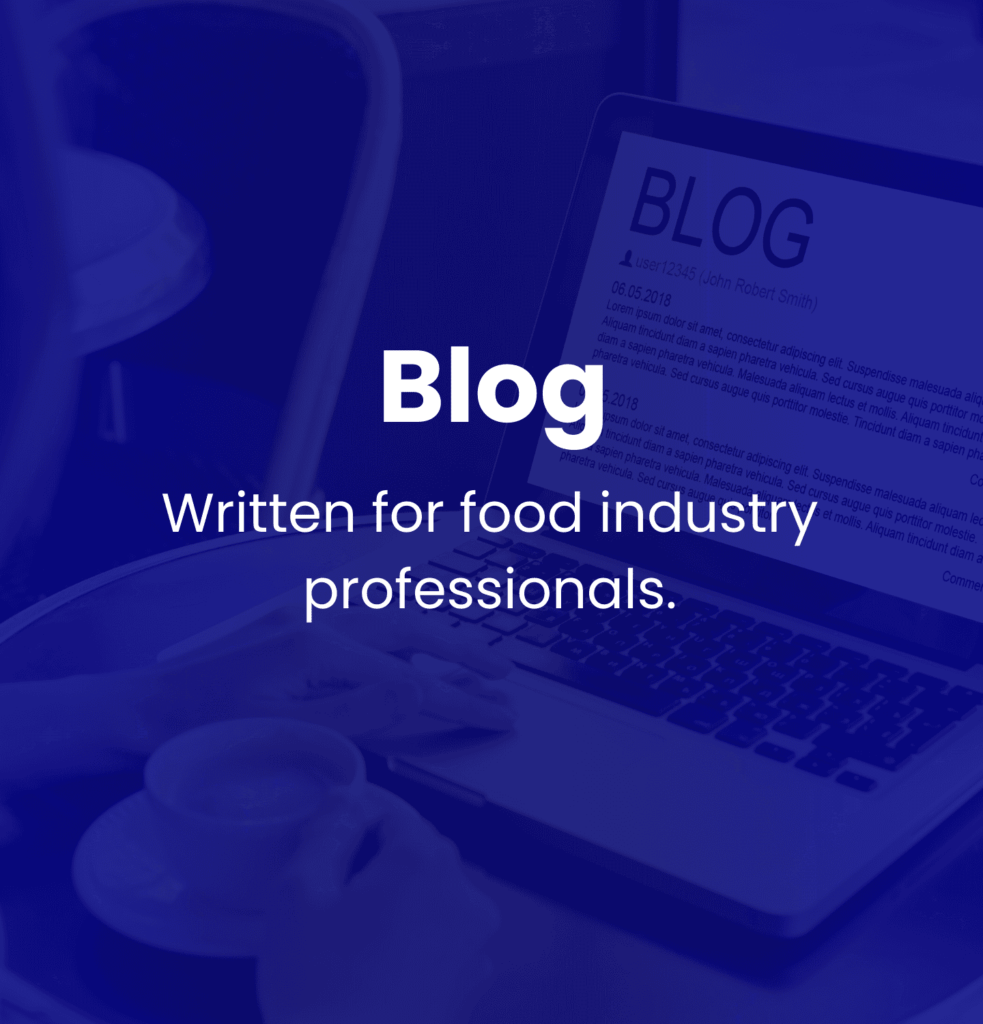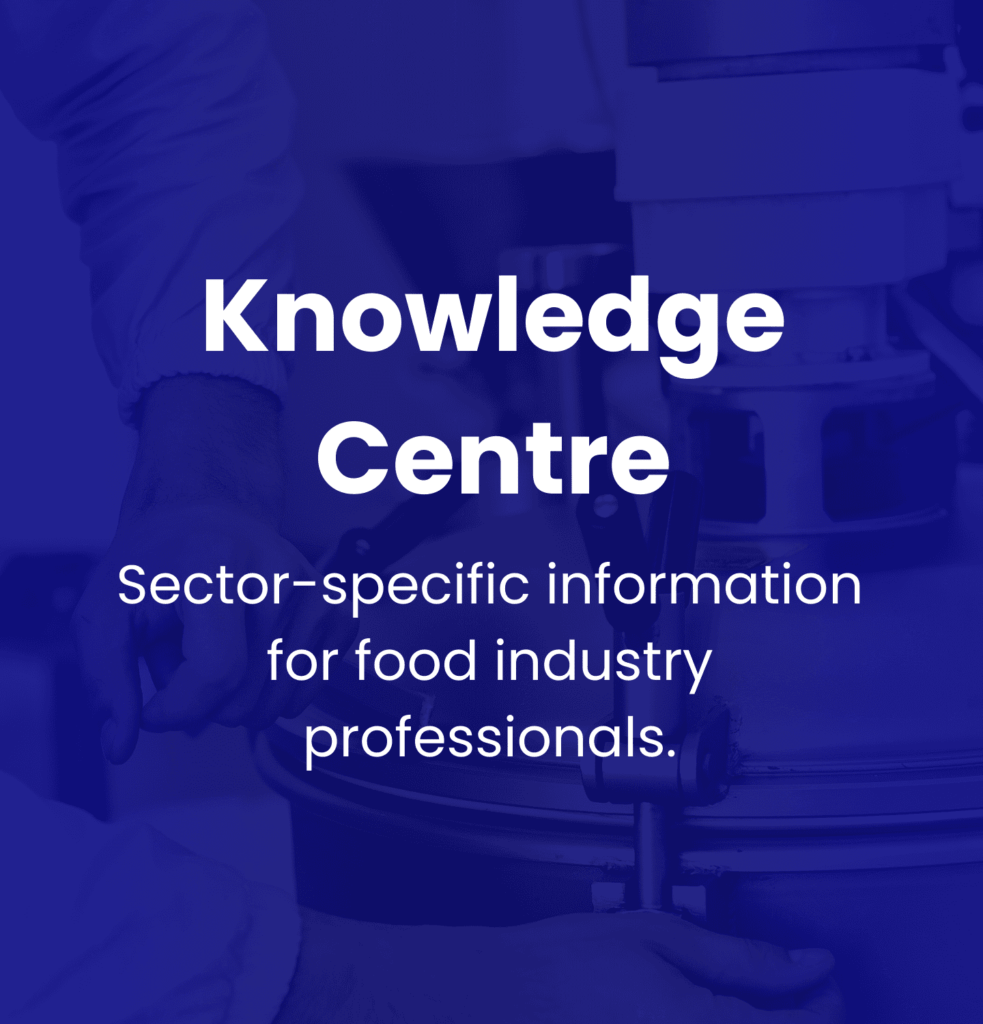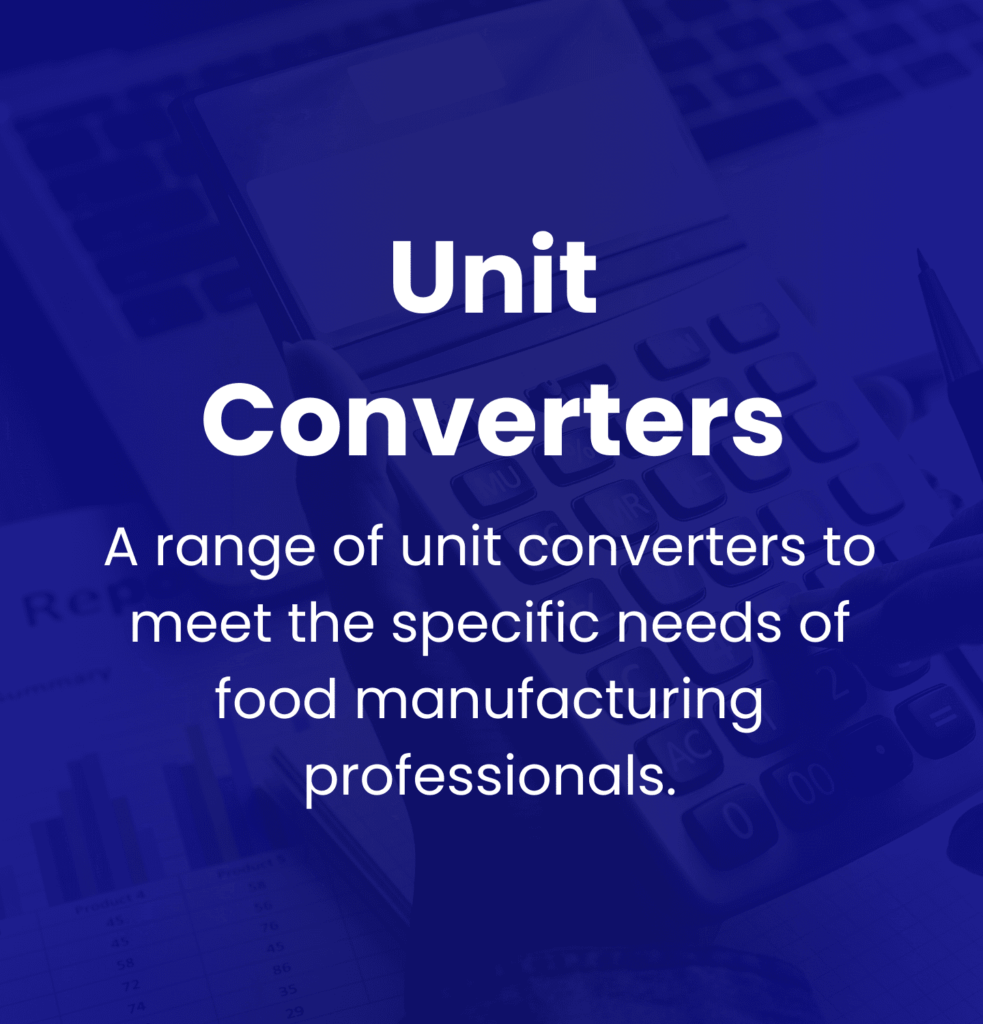Know: Work Instructions
Contents
Introduction
Key Takeaways
Decoding Work Instructions in Food Manufacturing
Crafting Effective Work Instructions
Evolution Towards Digital Work Instructions
Compliance with Regional and Global Safety Standards
Training and Ensuring Compliance
Innovation and Continuous Improvement in Work Instructions
Conclusion
Introduction
Picture a scenario where every individual involved in food production, irrespective of their experience levels, can routinely generate a product that complies with safety regulations, offers a standardised taste across multiple batches, and aligns with global guidelines. Such is the essential role of work instructions (WIs) within food manufacturing. This systematic approach uniquely combines human know-how and precise operations to safeguard both the consumer and the brand.
Work Instructions Throughout Food Manufacturing
In food manufacturing, work instructions serve as detailed, step-by-step guides to standardise tasks for safety, quality, and regulatory adherence. They provide employees with specific guidelines on safety protocols, allowing for smooth transitions between production stages and integrating regulatory checks into workflows, like allergen management to avoid cross-contamination.
Extending Beyond Compliance: Food Safety and Quality Assurance
Notably, work instructions’ influence doesn’t end at compliance; they also play a pivotal role in maintaining food safety and assuring product quality. By documenting standardised methods to control critical control points, these instructions allow manufacturers to control allergenic, biological, chemical, and physical risks – contributing significantly towards the prevention of foodborne hazards. Procedures stating specific cooking temperature and sanitation frequency help avoid pathogen growth, leading to a lower risk of product recalls. Additionally, standardised procedures in tasks such as ingredient mixing ensure consistency in the final product’s taste and texture—an essential aspect for customer retention amid a hotly contested market.
Global Relevance and Regulatory Frameworks in the UK
For the international food manufacturing community, especially those in the UK, the significance of work instructions is emphasised by rigorous regulatory standards. Navigating established requirements such as the Food Safety Act 1990 and principles of HACCP often pose a significant challenge. WIs simplify these processes by converting legal prerequisites into practical actions, ensuring complete documentation for compliance and streamlined audits.
Adapting to the Changing Food Safety Protocols in the UK
Given recent updates to food safety protocols in the UK, including the Food Standards Agency’s recommendations, the need for work instructions to adapt becomes evident. Now more than ever, food manufacturers are required to abide by specific allergen labeling laws and include real-time documentation for a simplified audit process. The strategic advantage of incorporating work instructions into daily operations transcends mere compliance—it also builds trust with consumers and stakeholders.
Key Takeaways
Work instructions significantly influence the integrity of Food Safety Management Systems (FSMS) by providing detailed guidance on important food safety tasks such as proper food handling, processing, and storage. They play an essential role in meeting compliance with relevant industry regulations and standards, such as ISO 22000, which mandates clearly defined procedures to preclude food safety hazards.
Role of Validation and Refinement in Work Instructions
The ongoing improvement of work instructions is achieved through regular validation and refinement. This process involves routine reviews and updates of these documents to ensure their ongoing relevance and efficacy. Implementing regular audits contributes to assessing the effectiveness of work instructions while capturing important feedback from employees and stakeholders. Focused improvement efforts further refine work instructions based on newly acquired information, alterations in processes, or emerging risks, aiding in the preservation of elevated food safety standards.
Digitisation of Work Instructions
Digitising work instructions brings about a noticeable enhancement in their accessibility, consistency, and compliance. This transition to the digital medium includes the integration of forthcoming technologies. For instance, digital checklists allow the monitoring of adherence to established procedures via mobile applications, therefore lessening the dependency on paperwork and improving documentation. Automation boosts the process of monitoring and ensuring compliance with standard operating procedures (SOPs). Additionally, Artificial Intelligence (AI) and data analytics contribute to identifying trends, foreseeing potential safety issues, and optimising workflows.
Understanding Compliance Requirements
Adhering to compliance requirements is a necessary aspect of effective food safety management. These requirements encompass specific regional and international standards. In the UK and beyond, the Brand Reputation through Compliance Global Standard (BRCGS) Food Safety Standard underscores compliance with food safety prerequisites through suitable documentation and HACCP principles. In the US, the Food and Drug Administration (FDA) in the United States administers food safety standards under the Food Safety Modernisation Act (FSMA) which lays down protocols for thorough food safety management. Similarly, the European Union imposes rigorous food safety regulations, emphasising hygiene and traceability in sync with EU food safety law. Frameworks like ISO 22000 facilitate international commerce by ensuring consistency in food safety practices across a variety of regions.
Food Industry Hub Management Systems can significantly boost the effectiveness of your food safety and quality management system, leading to improved confidence and elevated quality assurance throughout your operations.
Decoding Work Instructions in Food Manufacturing
Work instructions (WIs) in food manufacturing represent thorough, ordered guides explicitly crafted to enhance task execution while simultaneously underpinning priorities like safety, quality, and regulatory adherence. These instructions form a part of comprehensive systems like Standard Operating Procedures (SOPs) and Good Manufacturing Practices (GMPs), helping bridge the gap between theoretical principles and practical application on the production floor. They guide workers through necessary processes, such as ingredient preparation and equipment sanitisation, thereby maintaining consistency, safety, and compliance.
Definitions, Objectives, and the Role in Food Safety Protocols
Work instructions demystify the execution of specific tasks that uphold food safety and quality standards. Their core objectives encompass three areas:
- Operational Precision: WIs narrow down variability and human error by detailing precise procedures, such as mixing times and cooking temperatures. For example, in the preparation of ready-to-eat meals, WIs ensure temperature checks are documented to reach a minimum of 75°C for at least 15 seconds for pathogen elimination.
- Employee Safety: Safety protocols within WIs minimise risks associated with machinery and food handling by offering clear guidance on how to avert potential injuries. They outline key control points, like utilising lockout/tagout procedures during equipment maintenance.
- Regulatory Compliance: WIs align operational activities with local health regulations and industry standards, such as the FDA’s Food Safety Modernization Act (FSMA) that mandates documenting preventive control measures for risks identified in production processes.
In food safety protocols, WIs operationalise Good Manufacturing Practices (GMPs) and Standard Operating Procedures (SOPs), providing the necessary detailed steps to keep cleanliness, safety, and environmental control records during production
[Source: University of Minnesota].
Visualisation of the Relationship Between WIs, SOPs, and GMPs
Understanding the relationship between WIs, SOPs, and GMPs is essential for achieving operational excellence in food manufacturing.
| Component | Description |
|---|---|
| Work Instructions (WIs) | Provide clear directives for performing specific tasks and ensuring adherence to standards. |
| Standard Operating Procedures (SOPs) | Promote general methods and protocols for food production safety across processes. |
| Good Manufacturing Practices (GMPs) | Outline thorough guidelines for maintaining safe conditions throughout production. |
WIs operate within the context of GMPs and SOPs. For instance, a GMP might specify the requirement for regular sanitation of food contact surfaces. This leads to an SOP that details daily cleaning protocols, which subsequently results in WIs that provide exact disassembly, cleaning methods, and verification checks for the operator to follow, ensuring compliance.
Regulatory Compliance and Global Standards
Staying compliant with regulatory standards is a pressing requirement for food manufacturing, as these guidelines ensure food safety across markets in different jurisdictions including the UK, EU, and the US. WIs have a key role in ensuring this compliance.
Breakdown of the Correlation Between WIs and Compliance Standards
- UK Regulations: The Food Standards Agency (FSA) enforces adherence to the Food Law Code of Practice, requiring that WIs cover hygiene considerations and critical control point monitoring in line with HACCP principles.
- EU Regulations: EU Hygiene Regulation (EC No 852/2004) expects WIs to encompass cleaning schedules and microbial testing procedures to ensure food safety compliance.
- US Regulations: The FDA, under the Food Safety Modernization Act (FSMA), mandates WIs to document specific preventive controls for identified hazards in food processes, including sanitation and allergen management.
Assessment of How WIs Contribute to Meeting Standards
WIs uphold compliance by establishing clear measures that align with regulatory standards:
- Quality Control: By reducing variability in production, WIs assure that safety standards are met consistently.
- Transparency and Documentation: Work instructions serve to standardise the nature and frequency of record-keeping which in turn supports traceability and documentation throughout operations.
- Audit Preparation: WIs offer evidence during audits, showing that the established benchmarks for quality and safety are met and thus improving readiness for audits against frameworks like BRCGS and ISO 22000.
In food manufacturing, WIs emerge as significant tools that support operational safety, assure regulatory compliance, and serve the overarching aim of preserving the integrity of food production processes.
Crafting Effective Work Instructions
Generating efficacious work instructions in food manufacturing ensures adherence to food safety guidelines. A solid methodology hinges on a well-organised structured approach, like the WHO-WHAT-WHERE-WHEN framework. This structure promotes simplicity and clarity during implementation, an element indispensable for encouraging regular adherence amongst all staff levels.
Structuring Beneficial Work Instructions
- WHO: Defining the individuals or groups responsible for particular roles circumvents vagueness. Instead of mentioning personal names, pivot to job-specific designations. For instance, “QC Technician verifies CCP logs,” ensuring accountability remains role-focused.
- WHAT: Convey specific actions using measurable metrics and active verbs. As an alternative to “check temperature,” detail it as “Check temperature ≥ 165°F for 15 seconds” using a calibrated temperature logger.
- WHERE: Specify exact locations where designated activities occur within the facility. Leverage process maps to pinpoint important zones, like “Cooking Station CCP1” or “Allergen-Containment Area”.
- WHEN: Communicate clear schedules or timeframes for task execution, such as “Test pH every 2 hours” or “Calibrate thermometers pre-shift.” Providing specific timings aids in compliance and underscores operational consistency— key to preventing infringements on food safety.
Importance of Active Validation and Continual Refinement
The potency of work instructions necessitates the incorporation of a continual refinement process and an engaged validation system.
- Validation: Regularly assess that work instructions are adhered to and hazards are effectively controlled. Monitor compliance with objective limits, conduct audits producing measurable outcomes against defined safety standards.
- Continual Refinement: Establish a system for collecting feedback from personnel and reviewing compliance data to identify areas of improvement. This proactive approach keeps work instructions up-to-date, addressing evolving industry standards and operational requirements.
Essential Components of Work Instructions
Best Practices for Preventing Cross-Contamination and Maintaining Temperature Checks
Work instructions should encapsulate specific practices for maintaining temperature controls and preventing cross-contamination, both vital aspects of food safety protocols. Highlighting strict hygiene protocols, like the use of dedicated equipment for raw and ready-to-eat products, is essential to minimise allergen cross-contamination.
Expectation of regular temperature checks is key to curbing bacterial growth. Operators should lucidly state acceptable temperature ranges and delineate corrective measures in case of variant deviations. For instance, instructions might guide that temperatures beyond the acceptable threshold warrant immediate action to rectify the condition, thereby ensuring food safety.
Defining Safety Protocols and Operational Roles
Articulated safety protocols alongside defined operational roles can enhance food safety guideline compliance. Documented methods for handling emergency situations, like chemical spills or machinery failures, underscore the necessary steps for employees, thereby minimising risks.
Operational roles need specificity, with clear responsibilities assigned to each team member involved in production tasks to encourage accountability and food safety guideline adherence. This clarity bolsters compliance and operational efficiency, leading to a resilient food manufacturing environment.
Embedding these guidelines in work instructions aids food manufacturers in cultivating an efficient, compliant and safe production environment that aligns with regulatory standards and food safety requisites.
Sign-up for the Food Industry Hub Mail Service
We regularly produce new content for food industry professionals, and the Food Industry Hub Mail Service is the best way to stay up to date with the latest additions.
Signup today to be added to the Food Industry Hub mailing list.
Evolution Towards Digital Work Instructions
The food manufacturing industry is continually advancing. One key stride in this progress has been the move from traditional paper-based work instructions towards digitised formats. This shift has played an integral role in enhancing efficiency, compliance and quality assurance. Digital work instructions provide standardised procedures and are instrumental in reducing human error, with an estimated 30-50% cut in task execution errors.
Digital work instructions allow real-time access via mobile devices, heightening flexibility for updates as situations demand, which, in turn, refines operational methods during production changeovers.
Beyond their mobile compatibility, digital platforms include interactive checklists. These guides, coupled with embedded multimedia elements such as images and videos, help workers through vital tasks, improving understanding and adherence to safety standards. The integration of real-time data supports immediate modifications based on operational requirements. This function is epitomised in systems that alter work instructions triggered by alerts such as IoT sensor-detected temperature fluctuations.
Efficient data integration aids in maintaining regulatory compliance, inclusive of Food Safety Modernisation Act (FSMA) and Hazard Analysis Critical Control Points (HACCP) frameworks. This is accomplished through timestamped digital records that systematically document production processes.
Improvements Driven by AI in Work Instructions
Artificial Intelligence (AI) and Fourth Industrial Revolution technologies have fostered notable improvements in digital work instructions within the food manufacturing industry. Computer vision applications, for instance, perform real-time verification of tasks, ensuring adherence to safety protocols and enhancing food handling traceability. AI systems can autonomously confirm the use of appropriate personal protective equipment (PPE) or the suitability of raw materials for processing.
Addressing the language discrepancies within diverse food manufacturing workforces, multilingual auto-translation can be introduced in digital work instructions. These capabilities provide automatic translations into a multitude of languages, ensuring that all personnel can comprehend crucial operational guidelines which consequently minimises communication-related risks.
Compliance with Regional and Global Safety Standards
UK-Specific Guidelines
The key regulatory bodies for the UK’s food safety sector are the Food Standards Agency (FSA) and the Health and Safety Executive (HSE). The FSA promotes the implementation of comprehensive food safety management systems based on Hazard Analysis and Critical Control Point (HACCP) principles. This incorporates thorough documentation of work processes, which informs the strategies employed to address food safety–related hazards. Key components include vigilant temperature tracking, allergy vigilance, and confined cleaning routines to safeguard against food safety risks. For example, according to the FSA, all implementations must be recorded meticulously to guarantee continued accordance and effeciveness of safety measures [Source: Food.gov.uk].
The HSE, meanwhile, monitors standards for food machinery design and maintenance to ensure hygiene levels. Guideline BS EN 1672-2, for instance, insists that machinery and equipment take into account the efficiency of cleaning in their design, which in turn helps diminish the risk of contamination during the manufacturing of food. The types of materials and design approaches used must also reduce potential food safety issues [Source: HSE.gov.uk].
Overview of EU Regulations
The basis of the European Union’s food safety regulations is formed by EC Regulation 178/2002. This emphasizes the crucial role of traceability across the food supply chain. Thus, work instructions should incorporate detailed procedures concerning food product tracking from farm to fork. Such high levels of traceability allow for swift action during food safety incidents, aiding consumer safety.
Furthermore, Regulation (EC) 852/2004 places significant emphasis on hygiene practices and worker training, insisting that these aspects are deeply rooted in work instructions. This regulatory structure highlights the importance of involving staff education within compliance processes, thus aligning operational proceedings with existing safety standards [Source: EUR-Lex].
U.S. FDA Expectations
In the United States, the Food Safety Modernization Act (FSMA) lays out stringent sanitation controls for food manufacturers. Work instructions must accordingly detail comprehensive sanitation protocols, which cover cleaning schedules and methods applied to verify these sanitation practices. The FSMA mandate emphasizes the indispensability of preventive measures, requiring their formal recording within work instructions.
Similar to EU regulations, FSMA also requires extensive documentation relating to traceability. As such, work instructions should define supplier specifics and lay out procedures for tracing ingredients throughout the manufacturing process. This ensures complete transparency and compliance with regards to food safety.
BRCGS Standards
The Brand Reputation through Compliance Global Standards (BRCGS), a significant certification scheme, aims at improving food safety parameters, legality, and quality control within the food manufacturing industry. Work instructions should therefore align with BRC requirements, detailing risk assessment procedures for finished products and exhaustive operational guidelines. Procedures from supplier approval to finished product packaging should be recorded accurately, ensuring all operations are open to effective audit checks during compliance assessments [Source: BRCGS].
BRC standards demand meticulous record-keeping across all stages of food production. This includes information supportive of audit-proofing measures, such as monitoring Critical Control Points (CCPs) and corrective actions implemented during manufacturing segments.
Regulatory Expectations from Work Instructions
The Role in Compliance with Specific Standards
Work instructions act as a tool in ensuring conformity with compliance standards, such as traceability under EC 178/2002 or sanitation controls under FSMA. Specifically, they should consist of clear-cut procedures that centre around tracking and recording food products scrupulously, thereby enabling adept identification and recall of products when necessary.
Audit-Proof Documentation
Maintaining reliable audit-proof documentation is essential for validating conformance. This encompasses meticulous records of various operational parameters such as evidence of employee training on work instructions, validation records from thermal processing, sanitation documentation, and checks of incoming raw materials. These records not only exhibit compliance with food safety standards, but also simplify audit processes.
It is fundamental for food manufacturers to update their work instructions and documentation methods continually to mirror changing regulatory demands, and to instil an unrelenting culture of food safety across their operations.
Training and Ensuring Compliance
Overview of Integrating Work Instructions into a Training Curriculum
In food manufacturing, smoothly joining work instructions into a training curriculum upholds ongoing compliance and strict alignment to food safety standards. A judiciously crafted training schedule includes regular onboarding and refreshers, ensuring employees persistently stay updated on standard procedures and safety measures. Detailed and methodical work instructions expedite this integration, guiding workers to perform processes both safely and effectively. Routinely scheduled team safety briefings – particularly following incidents – reinforce protocol obedience and promote a sense of dedication to safety in the workforce.
To create and uphold an effectual curriculum incorporating work instructions, continuous improvement is imperative. Training contents should be updated periodically to mirror the latest food safety practices, industry regulations, and scientific advancements. According to experts, aligning training content with newer trends and regulatory changes greatly aids in upholding compliance standards and enhancing performance in food manufacturing environments.
Effective Strategies for Reinforcing Knowledge and Compliance
Effective strategies for strengthening both knowledge and compliance encompass innovative behavioural training techniques. A particularly effective method is scenario-based training, where employees work with realistic simulations relevant to their roles. This practical, hands-on training method encourages proactive problem-solving and also reinforces the internalisation of work instructions among its participants, allowing them to effectively apply their learned knowledge into their day-to-day operations.
It is also important to emphasise a culture of continuous improvement. Regular training content reviews and updates, based on the most recent scientific findings and evolving regulatory requirements, help maintain compliance standards at a high level. For example, incorporating opportunities for feedback empowers trainers to understand from their staff potential gaps in knowledge and training efficacy, thereby creating a responsive and adaptive learning space.
Tools for Curriculum Integration and Reinforcement
Understanding Just-in-Time (JIT) Training Methods
Just-in-Time (JIT) training methods present notable advantages in food manufacturing, especially when linked to reinforcing food safety protocols via work instructions. This training model delivers crucial information directly when and where employees need it, often utilising digital platforms. For instance, having instant access to food safety checklists through a mobile application allows staff to refer to pertinent guidelines right before performing tasks, significantly enhancing adherence to established procedures.
Role of Gamification and Interactive Learning
Gamification and interactive learning are transforming training programs by enabling the engagement of employees and driving home compliance principles in a dynamic manner. Techniques such as interactive modules and gamified assessments enable workers to learn through participation, making training more enjoyable and relevant. This approach has demonstrated improved retention of knowledge and facilitates understanding safety measures. Better comprehension eventually translates to more robust adherence to food safety standards.
Additionally, simulated training environments allow employees to practice using various work instructions without the associated risk of real-world errors. Immediate feedback mechanisms ensure any errors can be addressed promptly, strengthening their understanding of compliance necessities and expectations.
Innovation and Continuous Improvement in Work Instructions
Continuous improvement in work instructions is largely influenced by well-established feedback channels and the insightful Kaizen methodologies. The Kaizen principle places emphasis on problem solving led by employees, providing an environment where challenges can be voiced and improvements suggested by frontline workers. This iterative feedback mechanism not only assists in unveiling process inefficiencies but also instils a superior level of accountability within the team members, fostering a culture enriched with operational excellence within food manufacturing settings.
Organisations keen to enhance their work instructions should give precedence to setting up an efficient feedback system. This is key to capturing insightful observations from employees involved directly in day-to-day operations. When employees are encouraged to provide frontline feedback, evidence indicates it can lead to improvements in workflows and compliance outcomes within the food industry.
Infusing Kaizen methodologies into the work flow, especially frameworks such as 5S (Sort, Set in Order, Shine, Standardise, Sustain), can enhance the clarity and effectiveness of work instructions further. By standardising procedures and actively involving the employees in streamlining the process, manufacturers are able to diminish variabilities and potential for errors, instilling a sense of ownership among personnel over these important enhancements. Evidence suggests that organisations who adopt such a rigid structure for process improvement can adapt their work instructions dynamically, ensuring they remain compliant with industry regulations while being in tune with the changing operational realities.
Cutting-Edge Technologies in Food Manufacturing Processes
Advanced technologies such as Digital Twins and Predictive Analytics have created a substantial shift in the working of work instructions within food manufacturing. Digital Twins, which involve the creation of a virtual representation of the production lines, equip manufacturers with the ability to simulate operational changes and to trial new product lines or processes prior to execution. This ability not only reduces associated risks but also uplifts the process validation, ensuring a seamless integration of safety practices throughout the production line.
The integration of real-time monitoring technologies helps to closely supervise parameters paramount to food safety regulations such as temperature and humidity. IoT-enabled tools facilitate the monitoring of Overall Equipment Effectiveness (OEE) and alert personnel in the event of deviations from defined work instructions, enhancing quality control measures [Source: The Planet Forward].
Predictive Analytics tools provide organisations with the ability to analyse data trends for predicting and addressing potential equipment failures or quality problems proactively. This strategic approach enables manufacturers to keep possibilities of downtime and operational costs minimal and to align work instructions consistently with optimum performance standards. By incorporating compliance strategies directly into workflows, manufacturing firms are able to align their operational patterns to maintain safety and efficiency despite quickly changing regulatory environments. The proper fusion of modern technologies and continuous improvement methodologies is essential in ensuring that food manufacturing processes remain competitive, compliant and well equipped to face contemporary challenges.
Conclusion
In the food manufacturing industry, concise work instructions function as integral components of safety, quality, and operational efficiency. They are essential in providing clear guidelines for important tasks, including raw material inspection, equipment operation, and hygiene practices. By following these guidelines, employees can consistently perform their duties while adhering to safety protocols. These instructions help in avoiding errors that could potentially result in contamination or workplace incidents, thereby safeguarding both consumer health and worker safety. Adopting standardised work instructions helps mitigate risk and reinforces compliance with regulations such as the Food Safety Act and Good Manufacturing Practices, according to the Food Standards Agency.
Future Advancements
Adopting Best Practices
The evolution of work instructions will involve an increased emphasis on the incorporation of best practices from quality management and food safety disciplines. Future developments will include the regular updating of work instructions to reflect the latest regulatory changes and safety standards. Not only will this increase compliance, but it will also minimise the likelihood of non-conformity during audits. This attention to detail is important for both regulatory adherence and maintaining operational efficiency.
Emerging Training Methods
Training methods are also expected to change, placing a focus on engaging and interactive formats. Techniques such as microlearning and gamification will feature prominently in enhancing worker engagement and promoting retention of knowledge. For example, workers could learn about specific tasks or compliance protocols through bite-sized training modules, delivered via mobile devices without interruption to their workflow. Virtual reality (VR) systems may also provide immersive training experiences, effectively preparing employees for safe food manufacturing practices.
Technological Innovations
Advancements in technology will aid in refining work instructions. The Internet of Things (IoT) can enable real-time monitoring of production conditions; algorithms can dynamically adjust work instructions based on real-time data inputs. For example, sensors on machinery may provide immediate alerts when operational parameters deviate from set standards, instantly triggering corrective actions.
Implications for the Future
The impact of these advancements in work instructions will be far-reaching for the food manufacturing sector. Improved work instructions will not only contribute to the safety of employees but also aid in enhancing the quality of products while streamlining operations. As regulatory landscapes change and consumer expectations increase, agile work instructions will enable food manufacturers to adapt quickly and remain compliant with new guidelines. For example, the use of digital platforms that can be updated in real-time will ensure that the workforce is always in sync with the latest safety procedures and quality standards. By leveraging technological advancements and ensuring robust training, food manufacturers can strengthen their competitive position, ensuring transparency and quality throughout the food supply chain.
About The Food Industry Hub Knowledge Centre
The Food Industry Hub knowledge centre delivers informative content on a variety of topics pertinent to the food manufacturing industry.
You can return to all topics by clicking here.
From The Food Industry Hub Blog
Expanding on this topic with related content from our blog.

